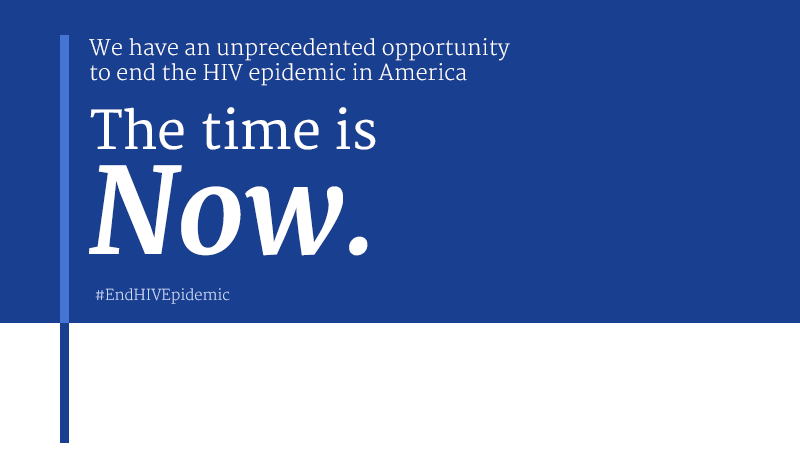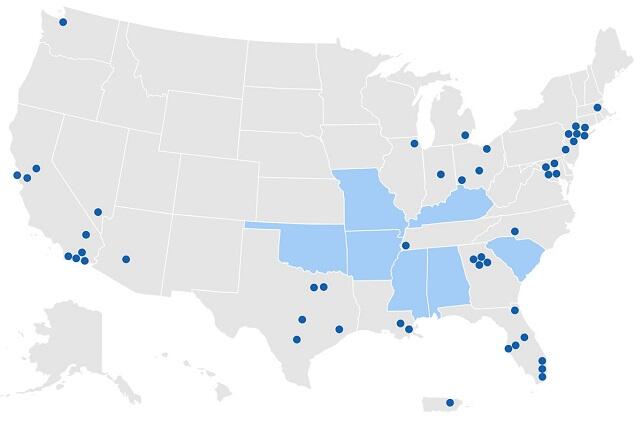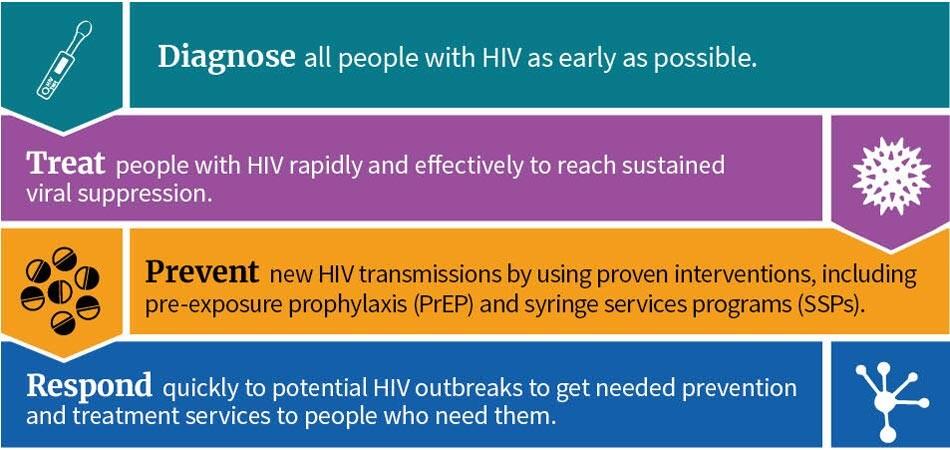Today we have the Right Data, Right Tools, and Right Leadership to end the HIV epidemic.
Background
The federal Ending the HIV Epidemic in the U.S. (EHE) initiative is an ongoing effort to reduce the number of new HIV infections in the United States by at least 90% by 2030.
In February 2020: HHS awarded $117 Million to End the HIV Epidemic in the U.S., which included:
- Nearly $54 million to 195 health centers with service delivery sites in geographic locations identified by the EHE initiative
- Approximately $63 million to 60 HIV/AIDS Bureau EHE recipients to link people with HIV who are either newly diagnosed, or are diagnosed but currently not in care, to essential HIV care and treatment and support services, as well as to provide workforce training and technical assistance
In March 2021: HRSA awarded $99 Million to End the HIV Epidemic in the U.S. to 61 HRSA HIV/AIDS Bureau EHE recipients to expand access to HIV care, treatment, medication and essential support services.
In September 2021: HRSA awarded over $48 million to 271 HRSA-funded health centers with service delivery sites in geographic locations identified by the EHE initiative. A subset of the 195 original awardees received funding to expand ongoing participation in EHE activities; this subset totaled 163 centers.
In June 2022: HRSA awarded nearly $115 million to support Ending the HIV Epidemic in the U.S. to 60 HRSA HIV/AIDS Bureau (HAB) EHE recipients. The awards support innovative strategies that help people with HIV access care, support, and treatment services to live longer, healthier lives.
In August 2022: HRSA awarded more than $20 million in funding to expand HIV prevention, testing, and treatment services at health centers nationwide. The funding builds on over $100 million in previously awarded EHE funding to more than 300 health centers, and will fund additional health centers in the counties, territories, and states identified as a part of the EHE initiative.
In April 2023: HRSA awarded more than $147 million to 49 HRSA HIV/AIDS Bureau EHE recipients to advance the Ending the HIV Epidemic in the U.S. initiative. This funding will help states and metropolitan areas with the highest levels of HIV transmission link people with HIV to essential care, support, and treatment, as well as support training and other resources for these jurisdictions.
In June 2024: HRSA awarded more than $147 million to 49 HRSA HIV/AIDS Bureau EHE recipients to advance the Ending the HIV Epidemic in the U.S. initiative. This funding will help states and metropolitan areas with the highest levels of HIV transmission link people with HIV who are either newly diagnosed, or are diagnosed but currently not in care, to essential HIV care and treatment and support services, as well as to provide workforce training and technical assistance.

Ending the HIV epidemic initiative geographic locations


The efforts are focusing on four key strategies that together can end the HIV epidemic in the U.S.:
- Diagnose all people with HIV as early as possible
- Treat people with HIV rapidly and effectively to reach sustained viral suppression
- Prevent new HIV transmissions by using proven interventions, including pre-exposure prophylaxis (PrEP) and syringe services programs (SSPs)
- Respond quickly to potential HIV outbreaks to get needed prevention and treatment services to people who need them
Through HRSA's Ryan White HIV/AIDS Program and Health Center Program, the agency has a leading role in helping diagnose, treat, prevent, and respond to end the HIV epidemic in the U.S.
Diagnose
HRSA-supported health centers are a key entry point for people with HIV who are undiagnosed. In 2021, more than 2.8 million health center patients received an HIV test. HRSA’s Health Center Program is increasing the number of new and existing patients tested for HIV in highly impacted areas by expanding outreach within their communities and increasing routine and risk-based HIV testing of health center patients.
HIV care and treatment
People with HIV who take HIV medication as prescribed and reach and maintain viral suppression cannot transmit HIV to their partner and can live longer and healthier lives. This highlights the importance of getting people with HIV linked to HIV care and treatment and helping them stay in care and on their medication.
HRSA's Ryan White HIV/AIDS Program is continuing to link people with HIV who are either newly diagnosed, or are diagnosed but currently not in care, to the essential HIV care and treatment and support services needed to help them reach and maintain viral suppression. In 2023, 90.6% of Ryan White HIV/AIDS Program clients receiving HIV medical care were virally suppressed, compared to 69.5% of clients in 2010.
More than 213,000 patients with HIV receive medical care services at HRSA-supported health centers. Of patients who tested positive for HIV for the first time, the majority were successfully linked to treatment within 30 days (83% of patients at HRSA-funded health centers; 88% of patients at Health Center Program look-alikes).
Prevent
Many health centers provide HIV prevention services, including pre-exposure prophylaxis (or PrEP) for people at high risk of acquiring HIV.
In 2021, more than 88,000 HRSA-supported health center patients received PrEP-associated services. HRSA is expanding access to PrEP for health center patients in key geographic areas. These efforts emphasize outreach, partnerships, and workforce expansion to increase access to and use of PrEP.
Respond
New laboratory methods and disease control techniques allow health departments to see where HIV may be spreading most rapidly. Called "cluster detection," this technique allows community partners to quickly develop and implement strategies to stop ongoing transmission. HRSA’s Ryan White HIV/AIDS Program and Health Center Program support these transmission-ending strategies by providing HIV care and treatment and PrEP to those identified through these important activities.
Community engagement has been fundamental to HRSA’s success since the beginning of the Ryan White HIV/AIDS Program and the Health Center Program. HRSA believes that our collective success in meeting the goals of the EHE initiative depends on how well we engage people with HIV and their communities in the planning, development, implementation, and evaluation of HIV care and treatment strategies. For this reason, the Ryan White HIV/AIDS Program developed a community engagement framework and identified five guiding principles for our community engagement efforts. Our efforts will be: Intentional, Committed, Sustainable, Flexible and Tailored, and Transformational.